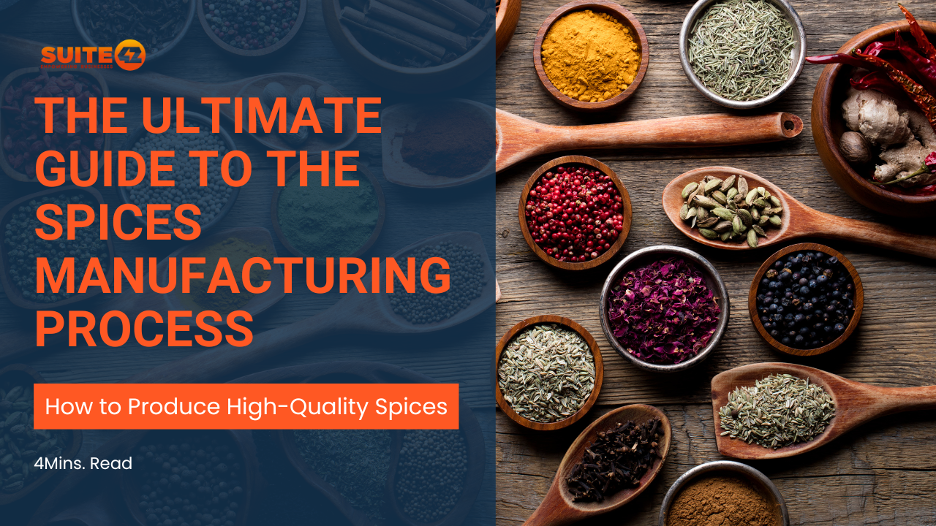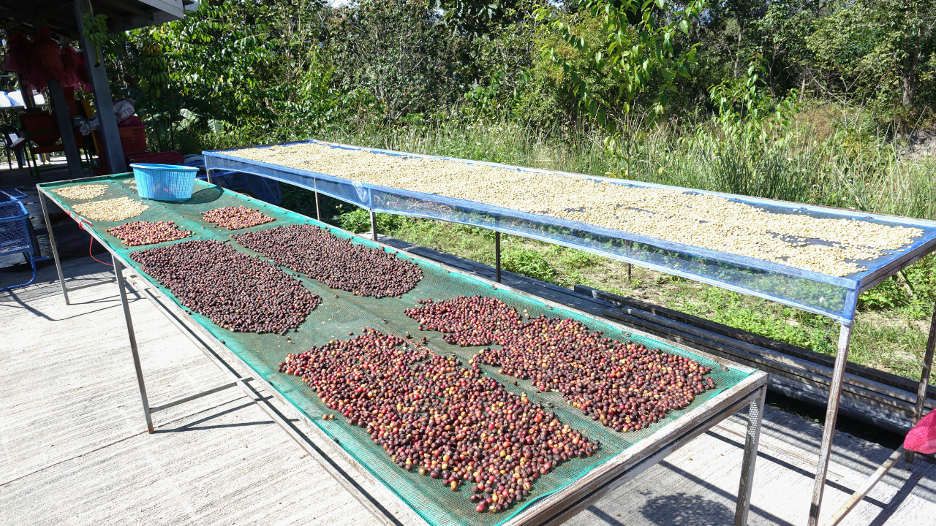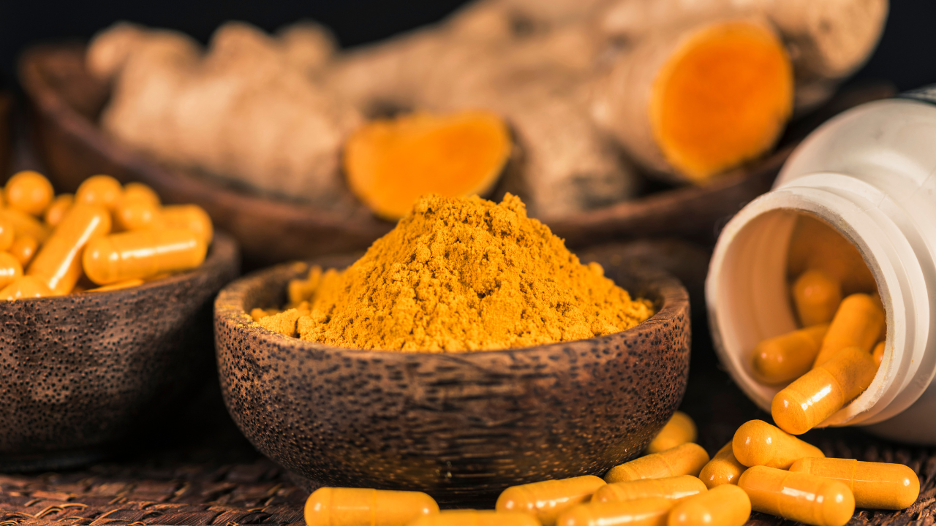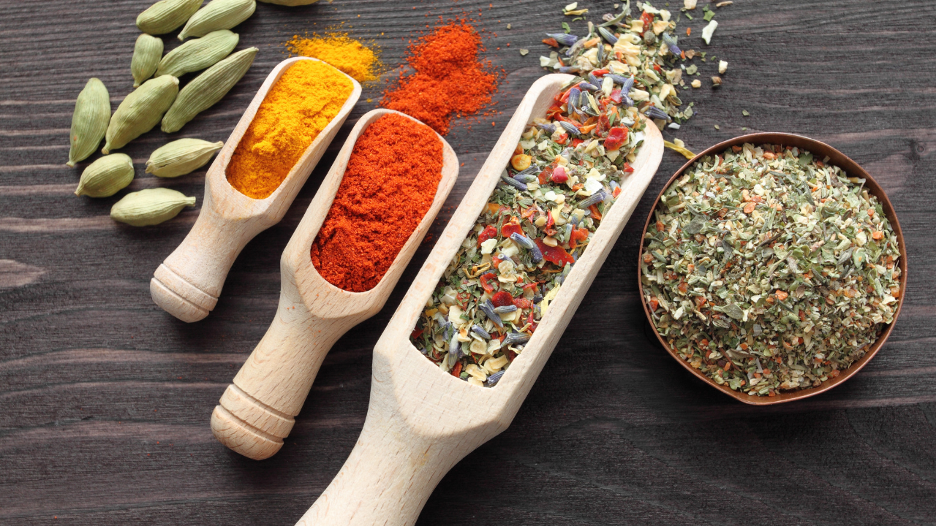
The Ultimate Guide to the Spices Manufacturing Process: How to Produce High-Quality Spices
Introduction: Understanding the Importance of Quality Control in Spices Manufacturing
Quality control is a critical aspect in the spices industry. Spices are an essential ingredient in many cuisines and are used to add flavor, aroma, and color to dishes. Therefore, it is crucial that the spices manufacturing meet high standards of quality and safety.
Without proper quality control measures, there is a risk of contamination, adulteration, and inconsistency in the final product. This can lead to health hazards for consumers and damage to the reputation of the brand.
Let’s examine some of the critical steps that spices manufacturers in India can take to ensure that their products meet high standards of quality and safety.
Step-by-Step Guide to Spices Manufacturing Process

Spices Industry in India has always been an integral part of our daily lives, adding flavor and depth to our meals. In this section, we will provide a step-by-step guide to the spices manufacturing process.
From sourcing the raw materials to packaging the final product, we will cover every aspect of the process. Whether you’re a spice enthusiast or someone who’s interested in start a spices business in India, this guide will give you an in-depth understanding of how spices are made.
You may want to read: How to start a spices business in India?
1. Cleaning and Inspection
The first step in the processing of spices is cleaning and inspection. Raw spices are often sourced from different regions, and they may contain impurities such as dust, stones, or other foreign particles. To ensure the production of high-quality spices, it is crucial to eliminate these impurities.
The spices undergo a thorough cleaning process, which involves techniques like sieving, air blowing, and magnetic separation. This meticulous cleaning not only ensures the removal of unwanted substances but also helps in preserving the natural essence of the spices.
2. Drying
After the cleaning process, the spices are carefully dried. Drying is a critical step as it helps in reducing the moisture content of the spices, which in turn enhances their shelf life. Various methods are employed for drying, such as sun drying, hot air drying, or dehydration.
The choice of method depends on the type of spice being processed and the desired quality of the final product. During this stage, the spices are exposed to controlled temperature and airflow to retain their flavor compounds while eliminating excess moisture.
3. Roasting
Roasting plays a pivotal role in intensifying the flavors and aromas of spices. This step involves subjecting the dried spices to controlled heat, which imparts a rich complexity to their taste profiles. Roasting also helps in reducing moisture further, enhancing the shelf life of the spices.
In this stage, the spices are carefully placed in roasting chambers or rotary drum roasters. The controlled application of heat causes the spices to release their volatile oils, unlocking a symphony of fragrances and flavours. Skilled artisans continuously monitor the roasting process, ensuring that each batch achieves the perfect balance between flavour enhancement and avoiding any scorching or burning.

4. Milling
Once the spices are adequately dried, they undergo the milling process. Milling involves grinding the spices into fine powders or coarse granules, depending on the intended use. This process not only enhances the texture but also unlocks the flavor profiles trapped within the spices.
Sophisticated machinery such as Impact-Pulverizer with Dust collector & Traditional pulverizers are utilized to achieve the desired particle size and consistency. The meticulous control over the milling process ensures that the spices are finely ground without compromising their aromatic and taste characteristics.
5. Mixing and Blending
The art of spice manufacturing lies in the skillful blending of different spices to create unique flavor combinations. Mixing and blending involve the precise combination of various spices in predetermined ratios to achieve a harmonious balance of flavors. This step requires expertise and a deep understanding of the properties and characteristics of each spice.
Mixers and blenders equipped with advanced technology facilitate the blending process, ensuring an even distribution of processed spices and the creation of consistent flavor profiles.
6. Packaging
Spices packaging is a crucial stage in the spice manufacturing process. It not only serves as a protective barrier but also plays a significant role in preserving the aroma, flavor, and quality of the spices. The spices are carefully packaged in airtight containers or sachets, which prevent exposure to moisture, light, and air, all of which can deteriorate the spice’s quality over time. Labels with detailed information about the spice’s origin, date of manufacture, and best-before date are affixed to ensure transparency and help consumers make informed choices. Suite42 offers different packaging options for spices such as Pouches, Boxes, Standy Pouches, Bottles and Glass Jars.
 The Role of Technology in the Modern Spice Manufacturing Process
The Role of Technology in the Modern Spice Manufacturing Process
In recent years, technology has revolutionized the spice manufacturing industry, streamlining processes and enhancing efficiency. Advanced machinery and automation have significantly reduced human errors and improved overall productivity.
For instance, computer-controlled systems now monitor and regulate temperature, humidity, and other variables during the drying and milling stages, ensuring consistent quality output. Furthermore, cutting-edge techniques like cryogenic grinding, which involves the use of extremely low temperatures to grind spices, help retain the natural flavours and aroma.
Machinery and raw materials for Spice Processing and packaging unit
Several types of machinery are commonly used in spice processing. Here are the names of some key machines:
1. Cleaning Equipment
This includes machines like vibratory sieves, air blowers, and magnetic separators for removing impurities and foreign particles from raw spices.
- Vibratory Sieves: Companies like Russell Finex, Kason Corporation, and GEA Group offer vibratory sieves designed for efficient cleaning and separation of spices.
- Air Blowers: Manufacturers like Air Control Industries and Gardner Denver provide air blowers for removing dust and impurities from spices.
- Magnetic Separators: Bunting Magnetics and Eriez Magnetics are prominent suppliers of magnetic separators used to remove metal contaminants from spices.
2. Drying Systems
Hot air dryers, dehydration units, or fluidized bed dryers are used to reduce moisture content in spices and improve their shelf life.
- Fluidized Bed Dryers: Companies such as Carrier Vibrating Equipment and Witte specialize in fluidized bed dryers for efficient moisture removal in spice processing.
- Dehydration Units: Manufacturers like Bucher Unipektin and GEA Group offer dehydration equipment suitable for drying spices
3. Milling Machines :
Hammer mills, pin mills, or impact mills are utilized to grind spices into fine powders or granules, enhancing their texture and unlocking their flavors.
- Hammer Mills: Fitzpatrick Company, Hosokawa Micron Powder Systems, and Schutte Hammermill are renowned manufacturers of hammer mills for spice grinding.
- Pin Mills: Munson Machinery, Hosokawa Alpine, and Kemutec provide pin mills suitable for fine grinding and particle size reduction in spice processing.
4. Mixing and Blending Equipment
Mixers, blenders, or ribbon blenders are employed to combine different spices in precise ratios, creating unique and consistent flavor profiles.
- Mixers and Blenders: Companies such as Munson Machinery, Ross Mixers, and Charles Ross & Son offer a range of mixers and blenders for precise spice blending.

Suite42 helps manufacturer Whole & Blended Spices – Check Out
5. Packaging Machinery
This includes equipment like filling machines, sealing machines, labeling machines, and vacuum packaging machines to ensure proper packaging and preservation of spices.
- Filling Machines: Bosch Packaging Technology, Ishida, and Tetra Pak provide filling machines suitable for accurately packaging spices.
- Sealing Machines: Manufacturers like Robert Bosch Packaging Technology and Marchesini Group produce sealing machines for secure and airtight packaging of spices.
- Labeling Machines: Companies such as Label-Aire, Quadrel Labeling Systems, and Weber Marking Systems offer labeling machines for clear and accurate spice labeling.
- Vacuum Packaging Machines: Multivac, Henkelman, and Webomatic are well-known manufacturers of vacuum packaging machines used in spice processing.
6. Grinding Machines
Spice grinders or pulverizers are used to further refine the texture and particle size of spices, ensuring a consistent and uniform end product.
Following are the top 5 producers of pulverizers for spice processing.
- Hosokawa Micron Powder Systems
- Schutte Hammermill
- Mikro Pulverizer by Hosokawa Micron Powder Systems
- Reduction Engineering Scheer
- Jet Pulverizer Company
These are just a few examples of the machinery commonly used in spice processing. The specific equipment used may vary depending on the scale of the operation and the desired end product.
Finding the Right Third Party Spice Manufacturer in India for Your Business Needs
Choosing the right 3p spice manufacturer in India for your business is crucial to ensure a reliable supply of high-quality spices. When searching for a spice manufacturer, consider factors such as their spices industry experience, adherence to quality standards, certifications, and their ability to accommodate your specific requirements. Look for manufacturers who prioritize traceability, sustainable sourcing practices, and have robust quality control measures in place. Collaborating with a reputable and trustworthy spice manufacturer will not only elevate your spice production but also enhance your brand’s reputation in the market. This will help you turn your business profitable !
Conclusion: Taking Your Spice Production to the Next Level with Best Practices & Commitment to Quality Standards
The spices manufacturing process is an intricate journey that requires meticulous attention to detail and a commitment to quality. By following the step-by-step guide outlined in this article, you can ensure the production of high-quality spices that will tantalize the taste buds of consumers. Embracing advanced technology, such as automated systems and innovative techniques, can further enhance the manufacturing process, resulting in consistent flavors and aromas.
Remember to partner with a reputable spice manufacturer in India who shares your commitment to quality standards, as this will set the foundation for a successful spice production venture. With the right practices and a dedication to excellence, you can take your spice production to the next level and captivate the palates of food enthusiasts worldwide.
Suite42 is a VC-funded startup that helps Enterprises/Brands access best-in-class manufacturing capabilities across India.
We were featured in Inc42






Leave a Reply